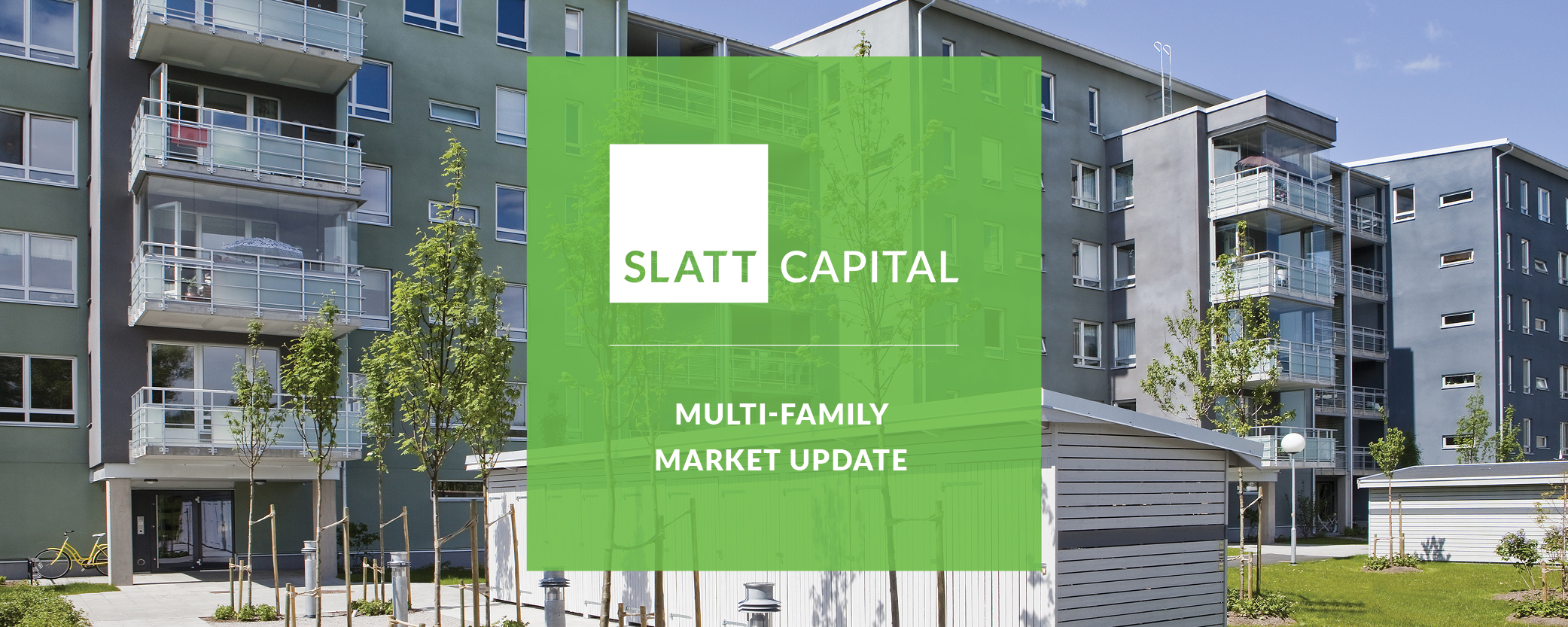
Multi-Family Market Update – February 2021
February 18, 2021
multifamily market report 2021
The multi-family market remains strong, and this asset class continues to be a favorite among the majority of lending groups. Most multi-family markets are healthy, although we have seen vacancy rates creep up and rents soften in most “urban core” locations. The following is a summary of how the major lender classifications are currently looking at multi-family financing.
Insurance Companies
- Most insurance companies continue to be underweighted in apartments and are looking to add to their portfolios in order to achieve greater diversification.
- Low-leveraged, high-quality properties are attracting the most aggressive rates (as low as 2.50% for 10-year-fixed money). Most insurance companies are targeting LTVs below 60% and the lowest rates are reserved for LTVs under 50% on A- and most B-quality assets. The loan size target for best-in-class pricing will be north of $5M. There are a number of insurance companies that will go down to $1M for a multi-family loan.
- Long-term fixed loan periods, up to 30 years.
- Loan pricing is predicated on leverage, location, cashflow, and borrower quality and financial strength.
- Interest-only available predicated on leverage, but more scrutiny on higher LTV and cash-out requests.
- In some cases, insurance companies are taking principal and interest reserves at closing. This has been consistent throughout the COVID-19 environment.
- Typically seeking properties in primary markets.
Banks
- Banks continue to provide competitive short-term loans (floating, 3, 5, 7, and 10 years). Best-in-class pricing, however, is rooted in banks’ providing interest rate SWAP pricing. This can be problematic for some investors. Make sure to read the fine print on those SWAP contracts.
- Minimum loan amounts are as low as $500K.
- Typically seeking to make loans in primary real estate markets.
- Depending on the transaction, bank LTVs can get up to 65%.
- LTV requirements have become more conservative during the pandemic.
- Banks utilize flexible prepays and inexpensive execution to attract multi-family borrowers to their products.
- Many banks are requiring principal and interest reserves. In some cases, these reserves are being waived where there is a depository relationship or lower LTV deals.
- Bridge and construction loans are now readily available.
Agencies
- Agencies use interest-only options and loan amounts of up to 70-75% LTV to appeal to borrowers in the multi-family space.
- LTVs, although more conservative now due to COVID-19, have shown signs of increasing as debt service reserve requirements have been reduced.
- Low-cost, small-balance Freddie and Fannie programs are available for deals ranging from $1M-$7M.
- Non-recourse, fixed-rate terms from 3-30 years. Floating rate loans are also available.
- The approval and closing process can be demanding, as lenders are subject to governmental oversight.
- Able to lend in secondary and tertiary locations.
- 10-year fixed interest rates are at historic lows, ranging from 2.50% to 3.50% (LTV-/DCR- dictated).
CMBS
- Highly liquid market after a pause in CMBS lending in March and April.
- Leverage up to 70% LTV.
- Defeasance or yield maintenance prepayment penalties.
- Non-recourse execution.
- Loan amounts are typically $3M and up.
- Interest rates range from 2.75-3.50% depending on loan size, quality, property type, and tenancy.
- Full-term-interest-only available.
- All locations considered.